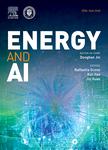Unsupervised learning of charge-discharge cycles from various lithium-ion battery cells to visualize dataset characteristics and to interpret model performance
作者机构:Helmholtz Institute Münster:Ionics in Energy Storage(IMD-4/HI MS)Forschungszentrum JülichJülichGermany Institute for Power Electronics and Electrical Drives(ISEA)RWTH Aachen UniversityAachenGermany Jülich Aachen Research AllianceJARA-EnergyGermany
出 版 物:《Energy and AI》 (能源与人工智能(英文))
年 卷 期:2024年第17卷第3期
页 面:397-405页
核心收录:
学科分类:0711[理学-系统科学] 07[理学] 08[工学] 081101[工学-控制理论与控制工程] 0811[工学-控制科学与工程] 071102[理学-系统分析与集成] 081103[工学-系统工程]
主 题:Unsupervised learning Dimensionality reduction Inductive bias .Machine learning Variational autoencoder
摘 要:Machine learning (ML) is a rapidly growing tool even in the lithium-ion battery (LIB) research field. To utilize this tool, more and more datasets have been published. However, applicability of a ML model to different information sources or various LIB cell types has not been well studied. In this paper, an unsupervised learning model called variational autoencoder (VAE) is evaluated with three datasets of charge-discharge cycles with different conditions. The model was first trained with a publicly available dataset of commercial cylindrical cells, and then evaluated with our private datasets of commercial pouch and hand-made coin cells. These cells used different chemistry and were tested with different cycle testers under different purposes, which induces various characteristics to each dataset. We report that researchers can recognise these characteristics with VAE to plan a proper data preprocessing. We also discuss about interpretability of a ML model.



